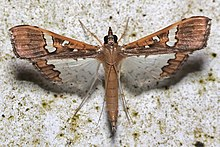

20th July 2022 (7 Topics)
Context
GM crops represent a potentially important tool for the Ghana’s food security strategy and harnessing it is a challenge now for many.
What is Cowpea?
- Cowpea, a black-eyed pea in some parts of the world – is a major source of protein in Ghana and the rest of the sub-continent.
- It is a staple and is integral to Ghana’s food security.
- Ghana is the fifth largest producerof cowpea in Africa.
- Especially in the northern part of Ghana, where it is second to groundnut in terms of area cultivated.
- Farmers of the area face many challenges, including an array of pests.
- The GM cowpea has been genetically engineered to resist the ‘Maruca pod borer’- the major pest in the region.
- The GM resistance will help decrease the amount of insecticide farmers have been using to control pests and increase yields.
- Insecticides are known to be deleterious to human health, but their use is on the rise throughout Africa.
|
About Maruca pod borer
|

What are the hurdles to commercialise it in Africa?
- The complex partnerships in developing GM crops and ownership rights.
- The appropriateness of the technology.
- Pricing and accompanying intellectual property rights.
- The Ghanaian government’s ability to regulate GM seeds and crops.
- GM cowpea could cost as much as 50% more than conventional seed.
More Articles




